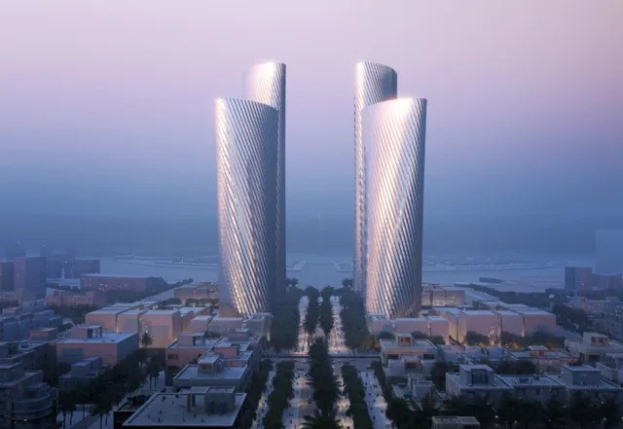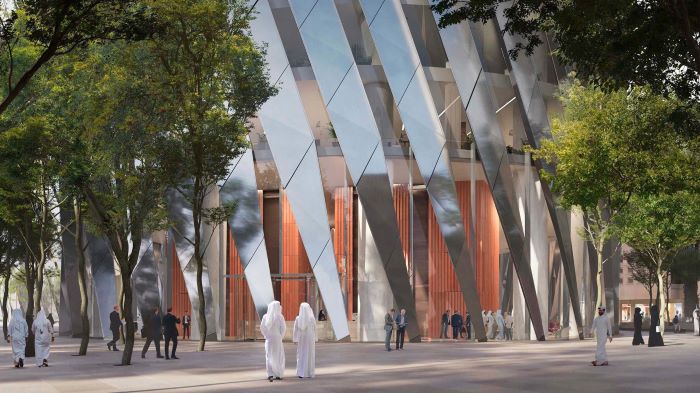Lusail Towers in Qatar: How renowned architect Norman Foster 'reinvented the high-rise building'

Lord Norman Foster, known as one of the world's foremost architects, has spent decades redefining the concept of high-rise buildings. His portfolio includes iconic buildings such as London's 30 St. Mary Axe—better known to Londoners as The Gherkin—and the HSBC building in Hong Kong. Now he has his sights set on Qatar, CNN reports.
Currently, the construction of buildings with a height of 301 meters is nearing completion. Foster's Lusail Towers is poised to claim the title of Qatar's tallest building, surpassing the current record holder, The Torch Doha.
The construction of these towers is part of a 1.1-million-square-meter project conceived by Foster + Partners and is a key component of the larger master plan for the city of Lusail, located 16 kilometers north of the capital Doha.

The towers consist of four separate blocks: two of 70 floors and two of 50 floors. Each tower is intended to serve as a hub for Qatari financial institutions.
“As an architect, I design cities that are in their infancy,” Foster said. “We have created a new area that creates infrastructure for future generations.”
To overcome the unique challenges posed by Qatar's hot climate, Foster's team had to move away from materials typically used in skyscrapers in cooler countries—part of what Foster called a years-long quest to "reinvent the high-rise building."
“Given the local climate and the sustainability issue ... you really want to protect yourself from solar radiation,” he added.
The design features advanced shading and ventilation systems, and the towers' exterior surfaces are clad in "marine-grade" aluminum that surrounds the buildings, protecting the glass from harsh sunlight while preserving views and letting in natural light.
Central to the design are special gill-like shading “fins” that not only optimize views and natural light for passengers, but also reduce solar radiation by 70% compared to traditional all-glass towers.
Follow NEWS.am STYLE on Facebook, Twitter and Instagram
- Flowers for the home and beyond: Astilbes bring color, texture to shady parts of the garden Astilbes are very beautiful plants that bring color and texture to shady parts of the garden. They produce masses of attractive fern-like foliage, and elegant plumes of feathery flowers appear from late spring through the summer months. Astilbe seedlings can be purchased in Armenia for 4,000-5,000 drams...
- 5 summer Spritz cocktails to sip in the sun Beautiful to look at, super refreshing with signature bubbles—whether it’s soda, tonic or prosecco, the Spritz is a stylish serving option that doesn’t require you to be a bartender in the summer heat. We’ve rounded up five Spritz cocktails that are refreshing and uplifting...
- Qatar Airways’ new business suites come with giant beds, turndown service While many consider the existing Business Class seats to be among the best in the industry, Qatar Airways is making them even better by offering additional amenities such as larger beds, movable displays, and a turndown service...
- Xiaomi unveils SU7 Ultra hypercar prototype that could beat Porsche, Tesla, Bugatti Chiron Xiaomi has made a significant leap in its performance car category with the unveiling of the Xiaomi SU7 Ultra, which boasts an impressive 1,548 horsepower, Hypebeast reports...
- Rome pays tribute to Fernando Botero with open-air sculpture exhibition The daughter of the late Colombian artist Fernando Botero has helped transform the streets and squares of Rome into an open-air museum displaying eight of her father's famous three-dimensional, whimsical sculptures...
-
21:19, July 26
Italy's 'Love Path' reopens after 12 years -
20:33, July 26
Flowers for the home and beyond: Astilbes bring color, texture to shady parts of the garden -
19:45, July 26
5 summer Spritz cocktails to sip in the sun -
16:16, July 26
Elon Musk re-talks about fighting Mark Zuckerberg -
15:22, July 26
Lady Gaga, Celine Dion to duet iconic 'La Vie en Rose' at 2024 Olympics opening ceremony -
13:18, July 26
Prince Harry shares his fears about Meghan Markle returning to the UK -
12:16, July 26
Bianca Censori's another spicy outfit: pants and barely covered nipples -
11:20, July 26
Kim Kardashian causes shockwaves with latest bikini snaps from Italy -
10:49, July 26
Selena Gomez in love with her boyfriend Benny Blanco -
10:15, July 26
The Kardashian clan learn their ‘biological age’ -
23:01, July 25
John Galliano leaving Maison Margiela? -
22:22, July 25
Qatar Airways’ new business suites come with giant beds, turndown service
All materials
- Archive
























